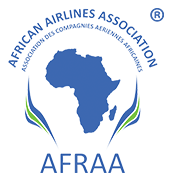MTU Maintenance launches ON-SITEPlus product branding
Dallas, June 30th, 2021 – MTU Maintenance, global market leader in customized aero engine solutions, launches ON-SITEPlus, a larger group of on-site, near-wing and quick-turn services. This development and rebranding of the portfolio underscores the importance of on-site and near wing activities as a means to reduce maintenance cost and extend on-wing times – a trend that has been particularly prevalent during the COVID-19 crisis and is expected to continue as the industry recovers post-pandemic.
MTU Maintenance’s growing ON-SITEPlusteam carries out AOG support, on and near-wing repairs from borescope inspections to module swaps as well as hospital shop visits for the largest engine portfolio worldwide, including the popular CF6, CF34, CFM56, GE90, LEAP, and V2500 engines. The company has six on-site facilities across the globe and over 120 authority approvals.
“We intelligently customize solutions from all services in our broad portfolio to ensure continued and reliable operations,” says Martin Friis-Petersen, Senior Vice President MRO Programs, MTU Aero Engines. “Wherever possible we repair on or near-wing and to the highest MTU standards. In doing so, we minimize disruption, reduce overall cost and complexity, as well as maximize engine usage for our customers. We see great demand for such services in the future and as such, will continue to invest in this business area in coming years.”
Its largest ON-SITEPlus facility MTU Maintenance Dallas, which can dispatch teams to customers or provide workscopes up to hospital shop visits, has recently expanded its available dock space by 40,000 square feet to provide short and long-term engine storage to support customer needs. MTU Maintenance Dallas is an MTU center of excellence for on-site and quick turn repairs for CF34, CF6, CFM56, GE90, V2500, PW2000 and PW4000 engines on the American continent.
“The ‘plus’ in ON-SITEPlus symbolizes not only the wide range of our services and additional support, but also our credo ‘customer first better every day’ in which we are dedicated to going above and beyond and always delivering more,” adds Arne Straatmann, Director of On-Site Services, MTU Maintenance. “Time is of the essence when it comes to such services, and we provide smart customized service packages that encompass various aspects of the MTU portfolio to increase the speed of our response. These include for instance, material solutions from our own supply in AOG situations or spare engines to ensure continued operations during repair.”
With over 30 engines in its portfolio, MTU Maintenance has completed over 20,000 shop visits in 40 years. The company combines this engineering expertise with in-depth market understanding and robust financial strength to create the best solutions for customers. MTU Maintenance has facilities in the Americas, Asia and Europe and employees over 5,800 engine experts from over 60 different nationalities.
Source: MTU Maintenance
